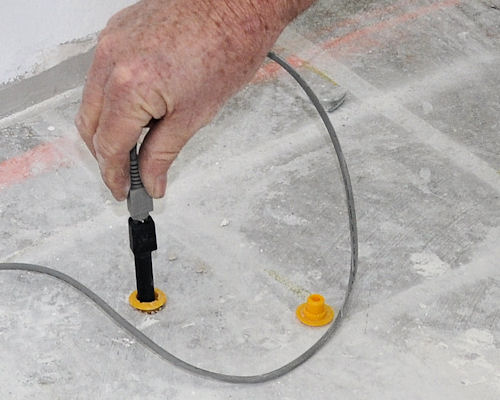Principles of moisture testing
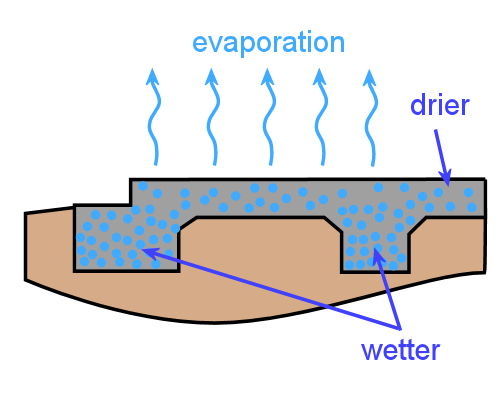 Audio for slide 1 (mp3 |6|KB)
Audio for slide 1 (mp3 |6|KB)
So you won't really know how much moisture is present if you only do a surface test.
It's also the case that slabs often have integrated beams and other areas of thickening where extra strength is required. This means that these parts will dry more slowly than the rest of the slab.

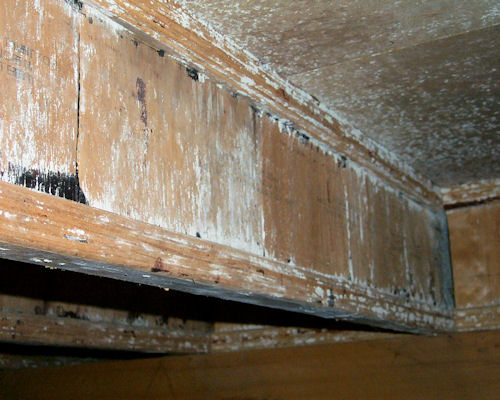 Audio for slide 3 (mp3 |6|KB)
Audio for slide 3 (mp3 |6|KB)
Different timber components may have had different moisture contents when they were installed, depending on whether they were supplied kiln dried or green from the sawmill.
There could also be particular areas in the building with moisture problems - such as through leaking water pipes, poorly sealed flashing or subfloor ventilation problems.
Again, you'll need to test the subfloor timbers in various places to make sure you've got an accurate picture of the moisture levels.

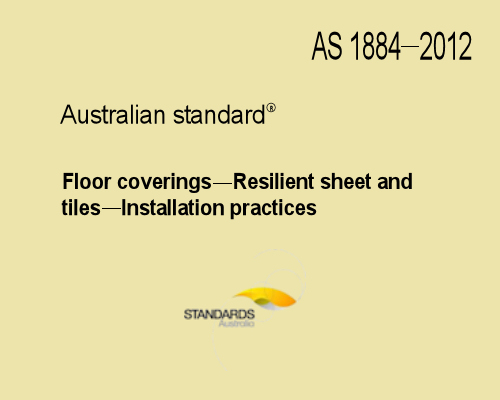 Audio for slide 4 (mp3 |6|KB)
Audio for slide 4 (mp3 |6|KB)
RH and MC levels
The Australian Standards for textile floor coverings (AS 2455) and resilient coverings (AS 1884) specify different relative humidity (RH) or moisture content (MC) levels, depending on which moisture testing method is used. These are shown in the table below.
We'll talk about how to physically carry out these tests in the following lessons.
Note that the figures shown below are general specifications in the Standards. Manufacturers of adhesives, coatings, levelling compounds and floor coverings may have different specifications listed in their installation guidelines.
There may also be particular regions in Australia where these general limitations are not appropriate, such as in North Queensland where the atmospheric RH can stay very high for long periods of time.

 Audio for slide 5 (mp3 |6|KB)
Audio for slide 5 (mp3 |6|KB)
| Subfloor | Testing method | Moisture level |
| Concrete | RH surface-mounted insulated hood test | Maximum RH: 70% |
| Concrete | RH 'in-situ probe test' in concrete | Maximum RH: 75% |
| Timber | MC test in timber. | MC range: 10-14%. (Note that for timber floor coverings, the MC range is 9-14% for all species, except cypress, which is 10-15%.) |
For concrete subfloors, three tests need to be carried out in the first 100 m2 of floor, plus one extra test for every additional 100 m2.
Tests may also need to done in other positions, depending on the structure of the floor.

 Audio for slide 6 (mp3 |6|KB)
Audio for slide 6 (mp3 |6|KB)
Testing methods
For testing RH in concrete, AS1884-2012 (the new resilient flooring Standard) follows the 'in-situ probe' testing methods set by the American Society for Testing and Materials (ASTM).
On the other hand, AS/NZS 2455.1:2007 (the older but still current Standard for carpet) uses a modified version of the ASTM 'insulated hood' test.
We'll describe both of these methods in the following lessons, but if you want to see the full details you should look up the original ASTM documents listed below.

- ASTM F2170-2011 - Standard test method for determining relative humidity in concrete floor slabs using in situ probes
- ASTM F2420-05 (Reapproved in 2011) - Standard test method for determining relative humidity on the surface of concrete floor slabs using relative humidity probe measurement and insulated hood.
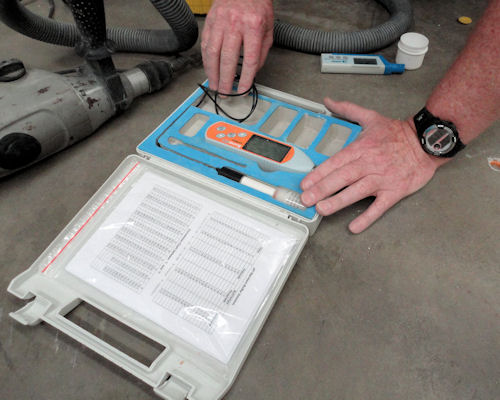 Audio for slide 7 (mp3 |6|KB)
Audio for slide 7 (mp3 |6|KB)
Occasionally, you might find that the ASTM and instrument manufacturer say two different things. In these cases, you should ask the floor covering manufacturer how to proceed.
For timber subfloors, the testing methods are defined by the Australian Standards.
Again, we'll describe the general methods later in this section, but you should also look at the original documents listed below.

- AS/NZS 1080 - Timber - Methods of test - Method 1: Moisture content
- AS/NZS 2098 - Methods of test for veneer and plywood.
 Audio for slide 8 (mp3 |6|KB)
Audio for slide 8 (mp3 |6|KB)
Test report
It's in your interests to fully document the testing you carry out, and record the following details:
- jobsite address
- type of subfloor tested, slab thickness and depth of the holes that you've drilled
- date and time of testings
- where the tests were carried out (with the positions marked on the floor plan)
- what the moisture and pH readings were (preferably with photographic evidence)
- subfloor temperature, ambient temperature and RH at the time of testing
- test equipment type, make, model, serial number and calibration status.


Learning activity
Audio 9 (mp3 |6|KB)Most flooring installers use a template-style checklist to record the details of their site assessment.
Click on the link below to see a sample template for a moisture test report. You'll notice that it has space for recording the important details relating to the subfloor. It also has a grid for drawing a floor plan and marking where the moisture tests were carried out.
Compare your own company's checklist with this template version. Are there any parts in your company's checklist that aren't covered in this template? Are there any parts in this template that your one doesn't have?
(Note that if your own checklist is a full site assessment form, you only need to look at the section relating to moisture testing.)
Sample template for a moisture test report






